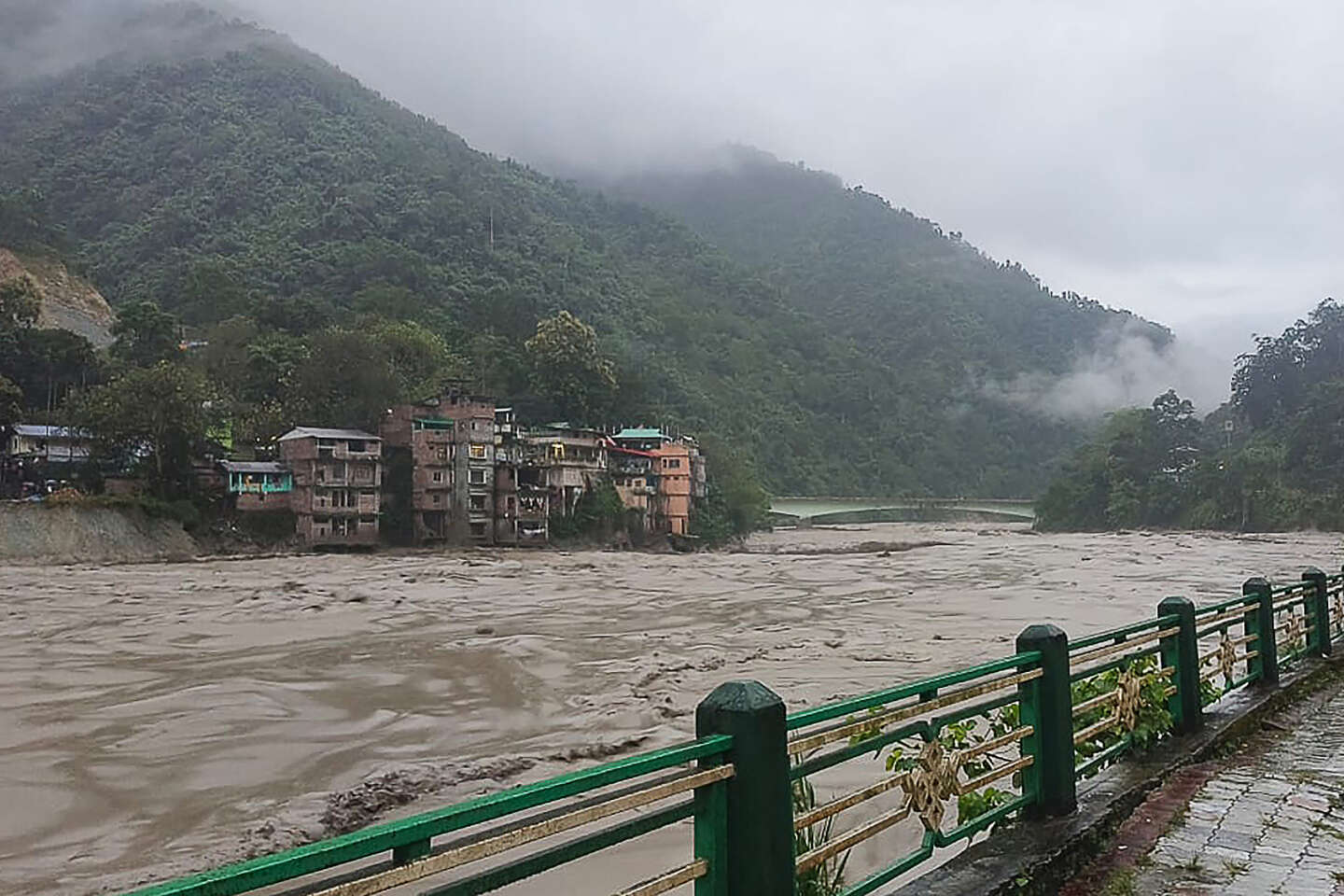
At least 10 people have been killed and 102 others missing following flash floods in the Himalayas
At least ten people were killed and 102 were missing following floods in a valley in the state of Sikkim in northeastern India, as a result of the overflow of a glacial lake in the Himalayas on Wednesday, October 4, according to Prabhakar Rai, the director of Sikkim State. State Disaster Management Authority. A previous report reported five deaths and dozens missing, including 23 soldiers.
The army said that 22 soldiers were now missing. The twenty-third was rescued. The army is working to return and present phone calls “Medical aid for stranded tourists and locals”She added in a press statement.
This remote mountainous region is located in the Himalayas near India’s border with Nepal. Located at the foot of a glacier near Kangchenjunga, Lake Lunak is the third highest peak in the world. Due to the upstream dam that released water earlier, the level of the Teesta river rose by 4.50 meters above normal, the Indian Army said. The severe damage extends more than 120 kilometers downstream, and roads in the area are also damaged “Very hard” Fourteen bridges were damaged and destroyed, according to authorities.
Indian Prime Minister Narendra Modi promised this “All possible support” To the affected population.
Climate change
Floods and landslides are relatively frequent in India and cause a lot of damage, especially during the monsoon period, which extends from June to September. But by October, the bulk of the monsoon is usually over.
Experts say climate change is making these disasters more frequent and larger. Melting glaciers also increase the size of rivers, while unregulated construction in flood-prone areas can also exacerbate damage.
Glaciers in the Himalayas are melting faster than ever due to climate change, exposing residents to unpredictable disasters.
Glaciers melted 65% faster between 2011 and 2020 than in the previous decade, according to a report published by the International Center for Integrated Mountain Development in June.
Based on current trajectories of greenhouse gas emissions, glaciers could lose up to 80% of their current size by the end of the century, according to the report.

“Unapologetic pop culture trailblazer. Freelance troublemaker. Food guru. Alcohol fanatic. Gamer. Explorer. Thinker.”
